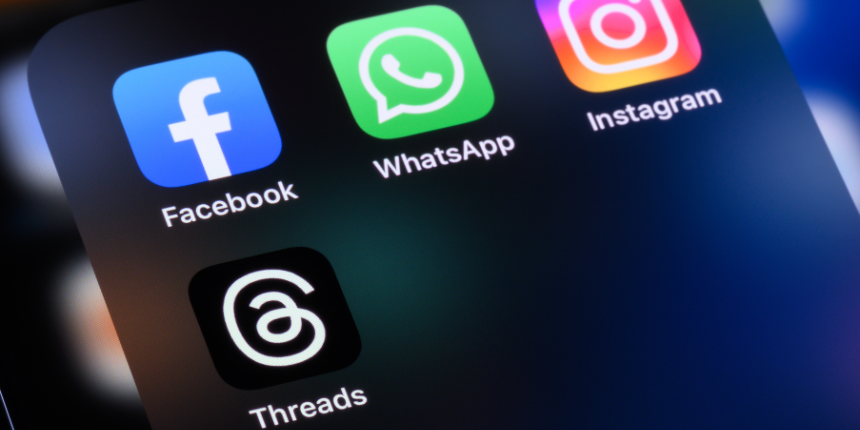
Amplify your reach and drive results with our tailored paid media strategies.
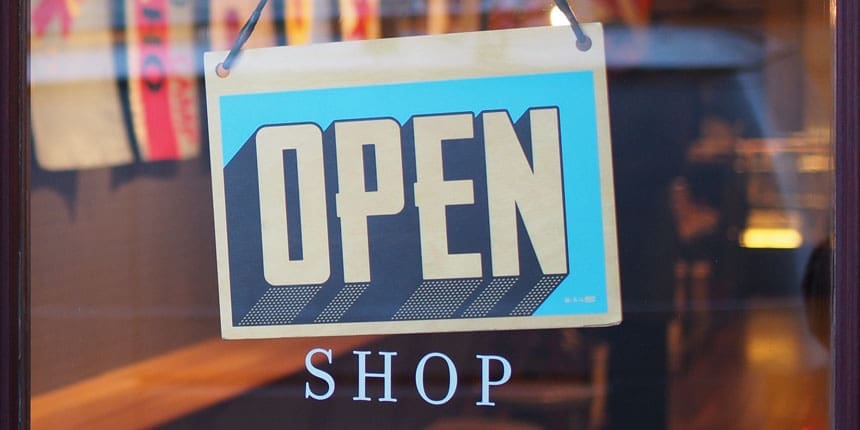
As Google continues to make moves in the local space, multi-location businesses must pay close attention to how these shifts will impact their marketing channel efforts. The days of siloed channel optimization and attribution are long gone (was that ever a good idea, anyway?), and if you haven’t yet nurtured an omnichannel approach to marketing, Google is ensuring you will—or else.
“Or else what?” you may ask. Well, advertisers that fail to embrace omnichannel may not realize the full impact and attribution of their marketing efforts, and won’t be able to optimize their programs against the full, intent-based customer journey. These changes are impacting advertisers as we speak, causing a swirl of confusion around shifting paid and organic metrics.
So, where to start? Let’s walk through the updates Google has made over the last year that have led us to this cross-channel sea change.
Google has made a lot of noise about their support of the local space, a critical aspect of marketing that DAC has specialized in for years. Of course, every marketer has been privy to two significant shifts in the local space: the boom of voice assistants and the increasing prominence of the local map pack. But did you notice a number of under-the-radar updates happening at the same time? It seems Google had a plan all along for a big local omnichannel push. If you blinked, you may have missed it.

It all started in Q2 of 2018, when Google offered its BETA called “Local Search Ads” as part of Search Partners. This was the first instance where paid ads were appearing in the map pack. Paid marketers were thrilled to better serve the intent of a local customer, but those managing local listings and organic search were left wondering how this change would impact channel performance—and if it was just the first sign of Google monetizing the local map pack.
Google tested into these local product iterations over time and essentially morphed their local search experiments into two similar-yet-distinct products.
Google Local Search Ads started out as promoted, intent-based ads in Maps, leading to the addition of six new local action metrics from Location Extensions to Google My Business (GMB) into Google Ads. This resulted in increased prominence for Location Extension details in ads, helping to push users to GMB pages rather than an ad click. We can now see in Google Ads, metrics from GMB including; click to calls, directions, website visits, other engagements (shared locations, saved), orders, menu views.
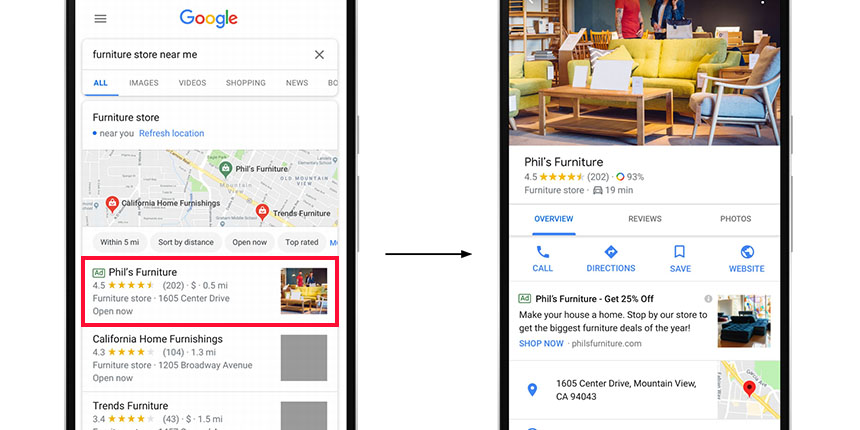
Initially a keywordless, Search Ads-only BETA, Local Campaigns evolved into an omnichannel machine learning offering across Google’s platform (Display, Search, Maps, YouTube, Business Profiles) to promote reach and drive customers in store.
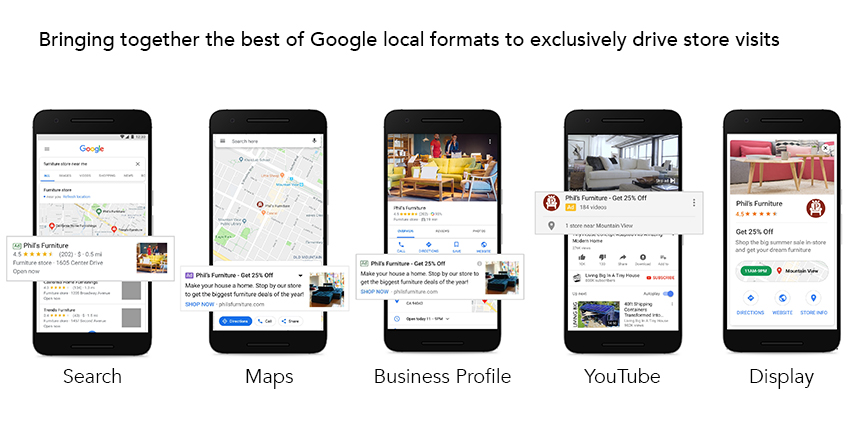
Advertisers in the local space may be noticing a “decrease” in traffic, online leads, and calls over the past several months. But note the quotation marks: this is not a “decrease” at all. In fact, your paid performance is likely as healthy as ever—you’ve just lost visibility into it.
With these updates, Google has given prominence to Location Extensions in paid ads, resulting in more clicks out to GMB. The system is moving towards automatically serving Location Extensions in ads, with a preference for street address and driving distance/directions instead of the phone number. But it all depends on user intent: “near me” searches indicate someone needs directions or an address, whereas a “tire replacement” query may be better served with a phone number to make an appointment.
With this shift, paid advertisers may be seeing a decrease in calls as well as a residual impact to online leads because there is no way to attribute calls and leads that are facilitated by GMB rather than a paid ad. Advertisers will see more direct interaction with Google’s location-based services, such as Google Maps, yielding more store visits and overall phone calls but with decreased channel visibility.

Subscribe to our monthly newsletter.
Below is an example, taken from an anonymized DAC client, that showcases how GMB click types from Location Extensions have changed over the past year. As location-based click types from Location Extensions have increased in paid ads, total GMB actions also increased due to these paid ad click-throughs while paid ad clicks to third-party websites have declined.

Leveraging metrics in both Google Ads and GMB, we can see how paid ads contribute to calls, directions, and the website through the GMB. Advertisers that only measure paid channel success against website KPIs—and assume that calls and directions can be safely attributed to GMB and organic channels—may seriously underestimate the value of their paid search campaigns.
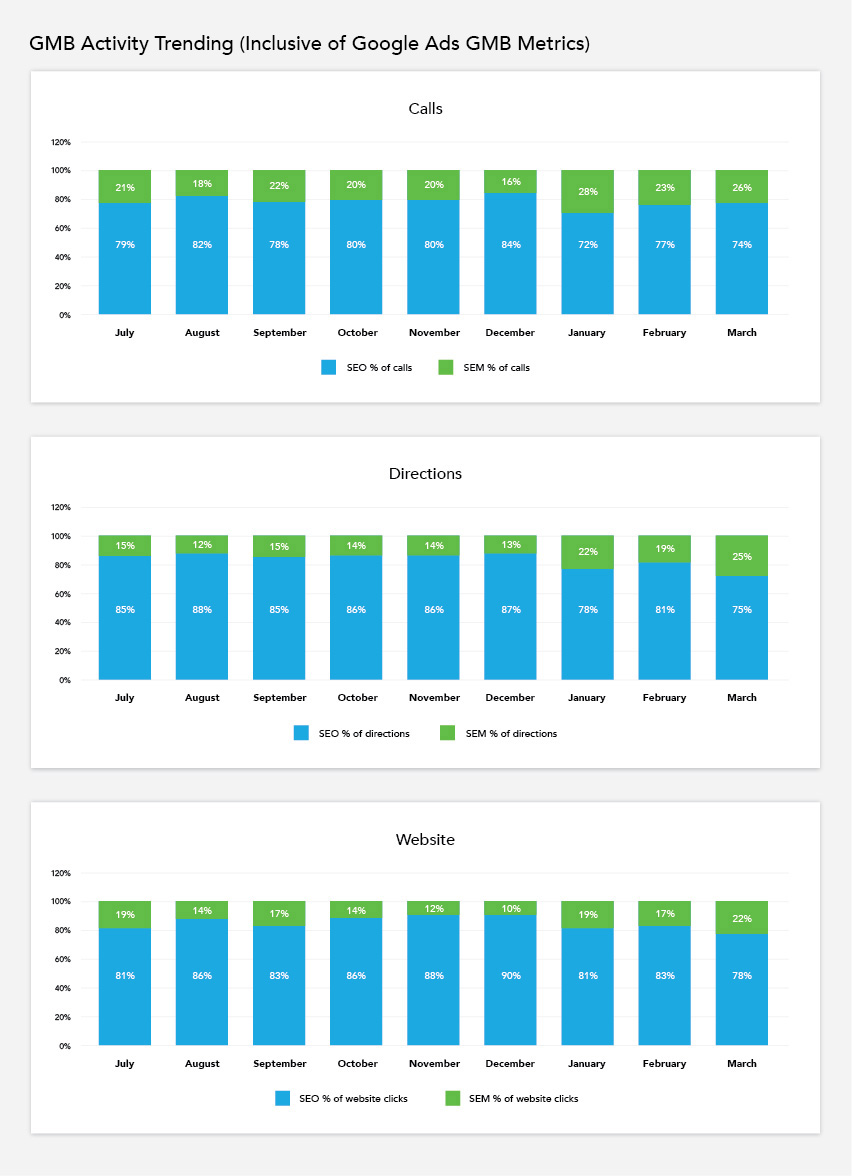
It is crucial to understand that paid, organic, and presence efforts will now all contribute to GMB conversions—and that Google’s changes may make it harder to track attribution to each respective discipline. But, as always, there is a solution at hand for the savvy advertiser.
Above everything else, Google wants to keep users within their platform, hence rerouting users to GMB and Google Maps as opposed to third-party sites through paid and unpaid channels alike. So it’s no surprise that they continue to roll out offerings like Local Campaigns to become a one-stop shop across the omnichannel: YouTube (paid and organic), Google SERP (paid and organic), display ads, app ads, and more.
But with tools like Search Ads 360 and Data-Driven Attribution (DDA) for Search, advertisers will be able to see attribution against specific channels or paid search segments to optimize accordingly, rolling out support for attribution against Store Visits in the coming months. If you’re not yet making full use of Google’s attribution models or Google tracking functionality, you’re fighting blind—and you’re likely to misconstrue the contribution of your paid efforts.
As Google continues to evolve the local landscape, it’s more important than ever to understand how your customers engage with different content, channels, and devices at each stage of their journey to purchase. Our Enterprise-to Local strategies—as described in our free playbook—are built to do exactly that, creating omnichannel media campaigns that break down consumer intent into three distinct, optimizable phases: Thinking, Planning, and Doing.
If you want to reinvigorate your local lead generation (and attribution) from the brand level down to hyperlocal moments, we’re ready to help. Contact DAC.
Amplify your reach and drive results with our tailored paid media strategies.
Amplify your reach and drive results with our tailored paid media strategies.
Subscribe to our monthly newsletter.